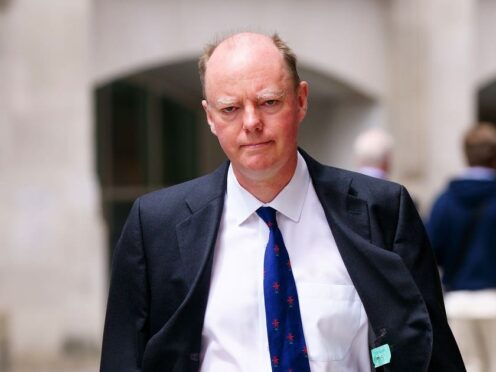
Disease prevention is “absolutely critical” to ensuring the NHS does not “struggle substantially” in the future, according to England’s Chief Medical Officer (CMO).
Sir Chris Whitty called for a “very serious, science-based” approach on prevention in order for people to have a better quality of life in old age.
He also said there should be focus on maintaining generalist skills in the medical workforce, rather than specialisms.
Speaking at the Nuffield Trust Summit, the CMO said shrinking the rates of disease “doesn’t happen just by accident” but because of “systematic approaches”.
Sir Chris added that there is a “very strong need to delay disease and treat at the earliest possible area” to ensure “people live with the shortest possible time in ill health”.
He said this approach would be good for patients, families, society, the economy, the NHS and social care.
“Everyone’s a winner,” he told delegates. “And we can do that by being systematic about primary prevention – the things government can do principally, not exclusively. Secondary prevention, largely rooted in primary care, but not exclusively.
“Screening and early diagnosis, and then treatment. And if we’re systematic across the whole sweep, some diseases you can almost entirely prevent but can’t easily treat – lung cancer is a good example.
“Some diseases you cannot prevent, but you can treat if you do it well. Prostate cancer is an example of that. And there are many where it’s a combination of the two, but this is possible to do.”

Sir Chris also said changing the environment in which people live is also important to preventing ill health.
“We need to adapt the environment, particularly in the areas where there are very high concentrations of older people, so the people will maintain their independence for a lot longer with the same level of disability.
“And relatively modest adaptations can often lead to the difference between someone being lonely, isolated, unable to engage socially, and actually having a full social life, despite having predictable, moderate disabilities of older age.
“And many of these are harder, in fact, in rural areas and we need to be honest about that and we need to invest appropriately.”
Sir Chris described old age and deprivation as “the two big drivers of where ill health is concentrated” and warned that they are “now diverging geographically” in the UK.
“In my view, the health care provision is going to need to reflect that,” he said.
He also warned that the medical workforce has moved “in the wrong direction” when it comes to specialisms, and the country should “reformat the way we’re going in medicine”.
“I very strongly think that we have moved in the wrong direction by allowing people to specialise, which is a good thing, but then in doing so to lose their general skills, which is a bad thing.
“We should be maintaining generalist skills for the longest possible period in every discipline.”
However, he said this point “is not an either or” but rather “an and” and called for a “much different approach” to research that recognises this.
Sir Chris also said it is a “certainty” that “age support ratios are going to move in a steadily adverse direction”.
“We have to design a service around that reality, rather than hoping it won’t happen or we can buy our way out of trouble, almost certainly we can’t.
“Fourthly, medical science will definitely help to shrink the impact of many diseases, but we should probably concentrate in particular, in my view, on diseases that cause disability and ill health for long periods in older age, rather than necessarily concentrating a very large proportion of our efforts towards extending, by small increments, life right at the tail end of a disease state.
Sir Chris emphasised that “shortening the period of ill health is realistic” but “a lot of it is in the prevention space”.
“We cannot treat our way out of these problems. We can only prevent our way out of these problems.
“And the key to this is delaying disease. Some diseases you can prevent principally infections, or infection-driven diseases like cervical cancer, but a great majority you can delay and if you can delay long enough, you get much less multimorbidity, shorter period in ill health, and you will probably live longer.
“But that’s not the principal aim of it. Prevention is absolutely critical.
“In my view, without a very serious attempt, science-based, on prevention the NHS will struggle substantially. But I do think there is actually a way through if we take a long enough run at it.”

Enjoy the convenience of having The Sunday Post delivered as a digital ePaper straight to your smartphone, tablet or computer.
Subscribe for only £5.49 a month and enjoy all the benefits of the printed paper as a digital replica.
Subscribe